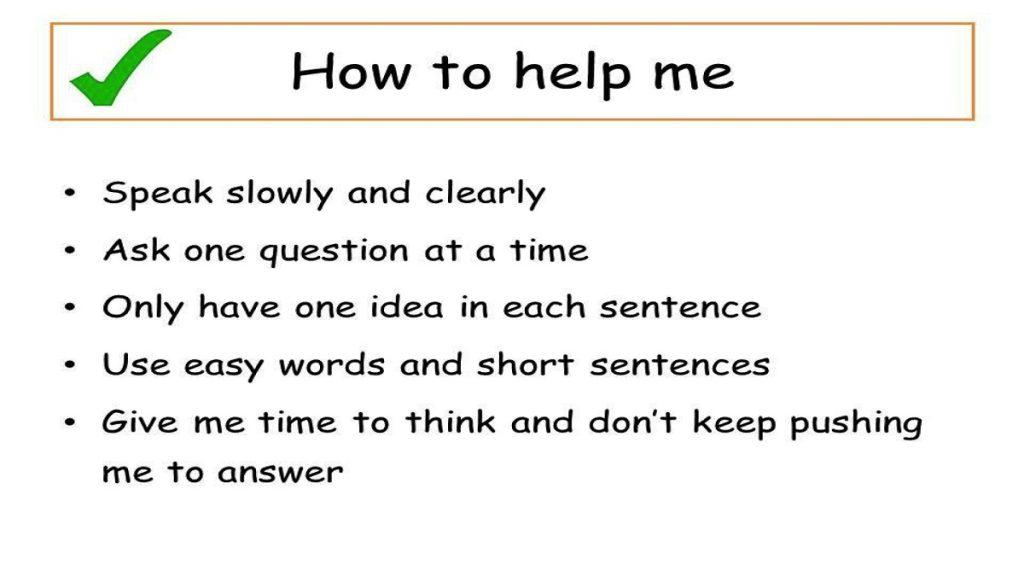Communicating with clients who have a limited vocabulary can be a challenge. It requires patience and understanding of the fact that they may not understand the same terms or concepts as someone with a more extensive vocabulary. We will explore the best ways to approach conversations with clients who have a less extensive vocabulary. We will discuss techniques for helping clients better understand the conversation, as well as tips for tailoring your language to their level of understanding.
Importance of Clear Communication with Clients
In any industry, clear communication with clients is crucial to building a strong relationship and delivering effective services. This is particularly important when working with clients who may have a less extensive vocabulary or difficulty expressing themselves.
When clients feel comfortable asking questions and expressing their concerns, tutors can more effectively tailor their services to meet the individual needs of each student. In turn, this can lead to stronger client relationships, increased student engagement, and ultimately better educational outcomes. By prioritizing communication and empathy, best IELTS tutors can create an environment that supports their clients and fosters growth and success.
Understanding the Needs of Clients with Limited Vocabulary
When working with clients who have a less extensive vocabulary, it is crucial to understand their unique needs and find effective ways to communicate with them. These individuals may struggle to express themselves or fully comprehend complex ideas, which can lead to misunderstandings or frustration.
One way to better understand the needs of clients with limited vocabulary is by taking the time to listen and observe. Pay attention to their verbal and non-verbal cues to gauge their level of understanding and comfort. Additionally, asking open-ended questions can encourage clients to share their thoughts and feelings more freely.
Another helpful approach is using plain language. Avoiding jargon or technical terms can make communication more accessible for clients with limited vocabulary. Break down complex concepts into simpler terms and provide clear explanations to ensure understanding.
Furthermore, simplifying sentence structure can greatly enhance clarity. Using shorter sentences and avoiding excessive use of complex sentence structures can make it easier for clients to follow along and grasp the intended message.
Creating an open environment for questions and clarification is also crucial. Encourage clients to ask for clarification or express any confusion they may have. Be patient and understanding when addressing their concerns, as this can foster trust and rapport.
Ultimately, understanding and catering to the needs of clients with limited vocabulary is essential for effective communication. By using plain language, simplifying sentence structures, and creating an open environment for questions, best home tutors in karachi can build stronger client relationships and ensure that their clients feel heard and understood.
Using Plain Language for Effective Communication
One of the most effective ways to communicate with clients who have a less extensive vocabulary is to use plain language. Plain language is a way of speaking and writing that is easy to understand and does not include complex terms or jargon. It is essential to avoid technical language or industry-specific jargon, which can confuse the client.
When using plain language, the focus should be on simplicity, clarity, and conciseness. Home tuition in Rawalpindi can help you develop and practice the use of plain language. It is also essential to consider the context and the client’s understanding when using plain language. For example, if a client is unfamiliar with a particular term, it may be helpful to use an analogy or provide examples to explain the term’s meaning.
Simplifying Sentence Structure for Clarity
When conversing with clients who have a less extensive vocabulary, it is crucial to simplify sentence structures for clarity. Complex sentence structures can easily confuse clients and hinder effective communication. By simplifying sentence structures, we can ensure that our clients understand the information being conveyed.
One way to simplify sentence structures is to use shorter sentences. Long and complex sentences can overwhelm clients and make it difficult for them to comprehend the message. Breaking down information into shorter and more digestible sentences allows clients to process the information more easily.
Additionally, it is important to use clear and concise language. Avoid using jargon or technical terms that clients may not be familiar with. Instead, opt for plain and simple language that is easily understood by clients with a limited vocabulary.
Using visual aids and examples can also help simplify sentence structures and enhance clarity. By providing visual representations or real-life examples, clients can better understand the context and meaning of the information being conveyed.
Overall, simplifying sentence structures is an essential aspect of clear communication with clients who have a limited vocabulary. By using shorter sentences, plain language, visual aids, and examples, we can ensure that our clients understand and benefit from our conversations. This approach not only improves communication effectiveness but also strengthens client relationships and fosters a positive environment for learning and growth.
Are you looking for a home tutor in Islamabad who can provide individualized attention and support to enhance your child’s learning experience? Contact us today!

Creating an Open Environment for Questions and Clarification
In order to effectively communicate with clients who have a less extensive vocabulary, it is crucial to create an open environment where they feel comfortable asking questions and seeking clarification. This can be achieved through active listening, acknowledging their concerns, and showing empathy.
When a client feels heard and understood, they are more likely to engage in the conversation and ask questions without hesitation. It is also important to avoid using technical jargon or industry-specific terms that the client may not be familiar with. Instead, use plain language and break down complex ideas into simple terms.
In addition, it can be helpful to use visual aids, such as diagrams or charts, to further clarify information. This not only helps clients better understand the topic at hand, but it also shows them that you are invested in their understanding.
Overall, creating an open environment for questions and clarification not only improves communication with clients, but it also builds trust and strengthens the client-advisor relationship.
Building Stronger Client Relationships through Clear Communication
Clear communication with clients who have a less extensive vocabulary can do wonders for your client relationships. By taking the time to understand their needs and using plain language, you are creating a space where they feel comfortable asking questions and clarifying information.
In turn, this can lead to increased trust and respect from your clients. They will feel heard and understood, which can result in a stronger connection with your business. This is particularly important when dealing with sensitive or emotional topics. Clear communication can help ease anxiety and build rapport.
Another benefit of clear communication is the ability to avoid misunderstandings or mistakes. When working with clients who have limited vocabulary, it is important to simplify sentence structure to ensure clarity. This can prevent confusion and misinterpretation, leading to a more positive experience for everyone involved.
Ultimately, clear communication with clients who have a less extensive vocabulary is a win-win situation. By taking the time to communicate effectively, you can create stronger relationships with your clients, while also preventing misunderstandings and mistakes. This leads to better outcomes for everyone involved.
Patience and Empathy in Communicating with Clients
When conversing with clients who have a less extensive vocabulary, it is crucial to approach the communication process with patience and empathy. It is important to remember that language barriers can be frustrating for both parties involved. As a professional, it is our responsibility to create a safe and understanding environment for our clients.
Patience plays a significant role in these interactions. We must give our clients the time they need to express their thoughts and ideas. It is essential to avoid rushing or interrupting them, as this may lead to frustration and a communication breakdown. By showing patience, we demonstrate our willingness to listen and understand their unique perspectives.
Empathy is equally important in these conversations. We must put ourselves in our client’s shoes and try to understand their limitations and challenges. By showing empathy, we can adapt our communication style to meet their needs and create a more comfortable and effective dialogue.
By incorporating patience and empathy into our communication with clients, we can build stronger relationships and ensure that they feel heard and understood. It may take some extra time and effort, but the rewards of clear and empathetic communication are immeasurable. Remember, effective communication is a two-way street, and by prioritizing patience and empathy, we can bridge the gap and create meaningful connections with our clients.











